Former computer engineer finds art a better way to express himself
-
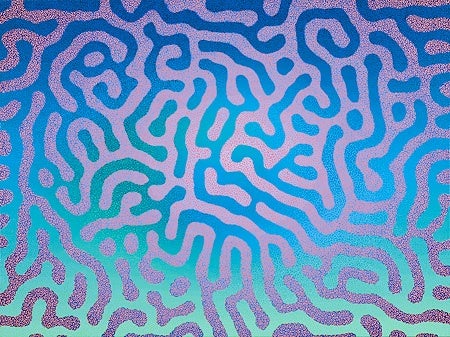
<p>Dynamism by Andrew Werth</p>
-
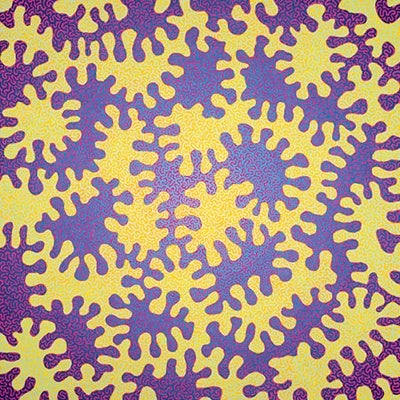
<p>Approaching Equilibrium by Andrew Werth</p>
-
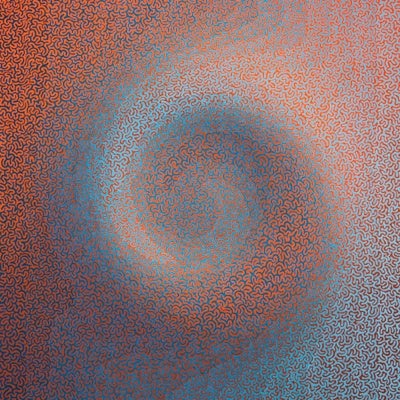
<p>Center of Narrative Gravity by Andrew Werth</p>
-
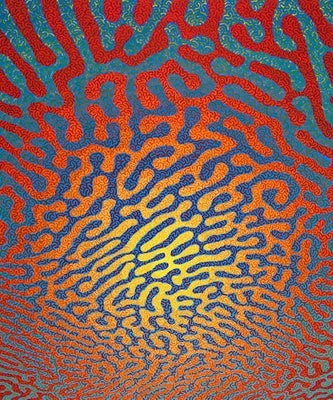
<p>Quite Qualia by Andrew Werth</p>
-
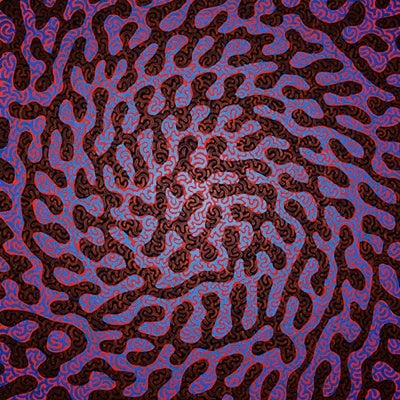
<p>Wind Up by Andrew Werth</p>
-
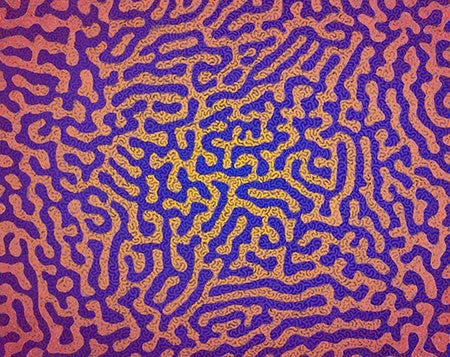
<p>The Plasticity of Perception by Andrew Werth</p>
-
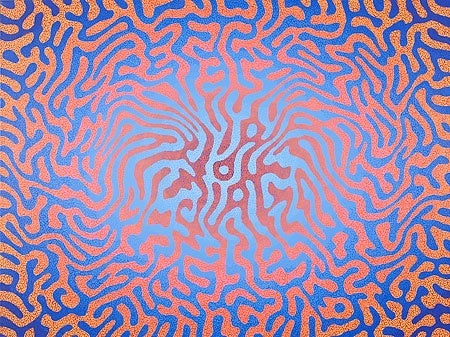
<p>The I in Disguise by Andrew Werth</p>
This is part of a series from Ilene Dube of The Artful Blogger.
Rudyard Kipling told us how the leopard got its spots, but mathematician and father of computer science Alan Turing explained how patterns in nature – such as the zebra’s stripes – are caused by a chemical reaction.
Inspired by Turing, West Windsor artist Andrew Werth, a former computer engineer, creates patterns in colorful abstract paintings that can be seen in upcoming exhibits at Art Times Two Gallery at Princeton Brain and Spine Institute and Artists’ Gallery in Lambertville. Patterns and Meaning at Art Times Two celebrates the 100th anniversary of Turing’s birth.
The brilliant orange maple leaves outside Werth’s studio pale in comparison to his canvases. Werth’s interests in psychology, philosophy, consciousness, perception, thinking and the self underlie the optical effects. “The titles of my paintings are clues to concepts that I find fascinating in the philosophy and science of mind,” said Werth.
“The I in Disguise,” “The Plasticity of Perception,” and “Approaching Equilibrium” — each seems to have its own inner light, beckoning the viewer inside. With undulating shapes and patterns, and highly detailed markings over an under layer, it’s a challenge to figure out how these are constructed. Following one path in a maze takes you somewhere else altogether.
When Werth comes across an idea in his readings, he writes it down for a possible painting. “I then try to figure out ways to suggest that idea in the painting through formal means, such as the use of color or shape. I don’t expect a viewer to know that and don’t need the viewer to be interested in cognitive science, since above all my goal is to make intriguing and compelling visual images.”
“Andrew… is interested the perceptual intricacies of embodiment, how our human experience is directly shaped by our bodies, with attention going back to the nature of our self-awareness and our awareness of the world around us,” said Art Times Two Gallery Curator Madelaine Shellaby.
Even before he started using Turing Patterns, “I had been playing around with hand-drawn interweaving curves as a structural starting point for my paintings,” said Werth. “After quite a bit of experimentation, I developed some techniques on the computer that let me turn a starting image into a balanced, positive/negative pattern that I later learned was essentially the same thing Turing had proposed.”
But the Turing Patterns are just the starting point. Then comes color, and how the colors transition through the painting. The puzzle the artist sets himself up to solve, with positive and negative layers, has its roots in the “Brainiac” puzzles he did as a child.
After the under painting is complete, Werth hand paints thousands of individual marks, using a maulstick to keep his hand steady. He uses metallic pigments for a reflective quality, and the paintings look different from different angles, and they seem to move and pulsate.
After studying computer engineering and information networking at Carnegie Mellon – he has bachelor’s degrees in each field – the New Jersey native worked in software development for Bellcore and CNET. When he rose to management, he missed the creative side, and so at age 29 decided to try something else. Thinking he might like to study psychology or philosophy and go on to an academic career, he moved to Manhattan, but got sidetracked taking cooking classes at Peter Kump’s cooking school and art classes through the Art Students League.
Learning drawing, color theory and landscape painting, his earlier works were representational. Even now, his studio includes a realistic portrait of his wife, Karen Yee, and a self-portrait. “I liked representational painting, but didn’t have that much fun that I’d want to do it professionally. The subjects I’m interested in are abstract.”
When he took classes in abstract painting at Cooper Union and the 92nd Street Y, it reminded him of the maze drawings he did as a child. During one of his classes in abstraction, while painting a still life, “in frustration I started doing marks in colors, and it triggered something in my brain. I was interested in perceptual things, and I developed my technique, learning by experimenting.”
Putting different colors next to one another could push something forward or back, he discovered. With color gradients, the brain perceives a fading into the distance.
One of the biggest compliments Werth has received was at an opening of an exhibit at D&R Greenway’s Johnson Education Center in Princeton, when a viewer told him she felt as if she’d been to the place he painted in her dreams.
“As a software developer, most of what you write fades away, but I hope my paintings allow me to be a part of people’s lives for a long time.”
Patterns & Meaning: Alan J. Klawans and Andrew Werth, Artists’ Gallery, 18 Bridge Street, Lambertville, November 9 through December 2. Opening Reception: Saturday, November 10, 3-6 p.m. www.lambertivillearts.com
Energy in Mind: ArtTimesTwo gallery at Princeton Brain and Spine Care Institute, along with the work of Jennifer Cadoff and Debra Weier, 731 Alexander Road, Princeton Junction, November 2012 through March, 2013, opening reception November 8, 5-7 p.m. www.artimestwo.com
The Artful Blogger is written by Ilene Dube and offers a look inside the art world of the greater Princeton area. Ilene Dube is an award-winning arts writer and editor, as well as an artist, curator and activist for the arts.
WHYY is your source for fact-based, in-depth journalism and information. As a nonprofit organization, we rely on financial support from readers like you. Please give today.




